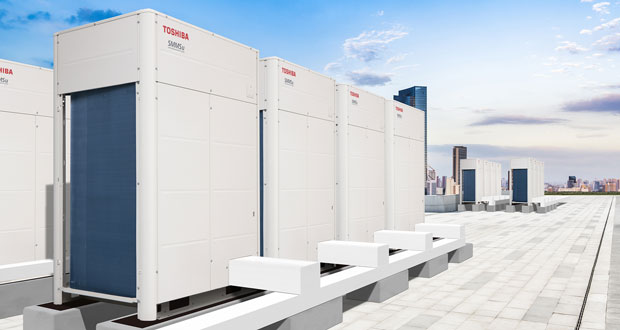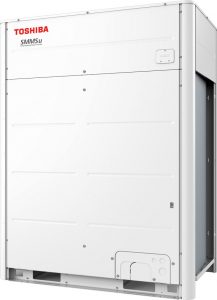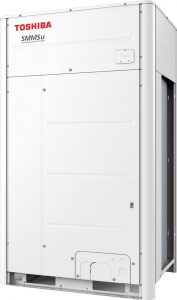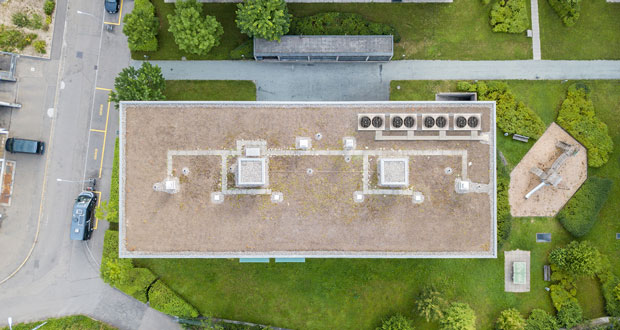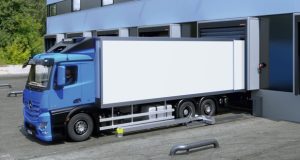Completely redesigned, SMMS-u optimises climate control in all types of commercial buildings
Toshiba, a global leader in high-efficiency, high-performance HVAC systems for domestic and commercial buildings, has unveiled the seventh generation of its industry-leading VRF (Variable Refrigerant Flow) system for centralised cooling and heating in commercial buildings.
Completely redesigned from the ground up, Toshiba’s innovative SMMS-u headlines with its top-class efficiency, adaptability and connectivity, as well as its ease of installation and year-round comfort control.
Regardless of the premises – office building, hotel, shop, restaurant, bar, hospital or factory – the Toshiba SMMS-u provides a host of benefits to consultants, installers, owners and users. Among several new technologies is Toshiba’s exclusive triple rotary compressor for greater efficiency and capacity, a space-efficient chassis and a high-capability communications protocol.
Superior energy efficiency is in Toshiba’s DNA, and the Eurovent-certified SMMS-u is no different. Housed in an ultra-compact chassis, energy consumption is minimised through the combination of proprietary triple rotary compressor and super-efficient heat exchanger. These technologies position the SMMS-u as a sector-leading VRF in seasonal efficiency that helps building owners and tenants reduce their energy bills. Notably, efficiency is also assured in part-load conditions, which prevail 90% of the time in typical commercial settings.
To address virtually any commercial building application (new build or refurbishment), the adaptability of SMMS-u derives from an unparalleled array of line-up choices. Nine single modules from 8 to 24HP and up to five outdoor units can be combined to achieve 120HP. Alongside free combination possibilities, around 3,000 solutions can be created to meet customer requirements in terms of efficiency, capacity, refrigerant amount or footprint. Whatever the outdoor temperature, SMMS-u is able to operate from -25°C to +52°C.
With SMMS-u, innovative engineering ensures there is no longer any need to be limited by piping restrictions. For instance, the system now allows a total piping length of 1,200m, with 250m permissible from the outdoor unit to farthest indoor unit. Providing even more options to consultants and installers, a height difference of up to 110m is possible between outdoor and indoor units for projects in elevated buildings.
Another notable advance is the connection of up to 128 indoor units thanks to Toshiba’s new TU2C-LINK protocol, which is bringing new perspectives in data volume and communication speed. Importantly, in order to adapt the capacity of the system to building use, the SMMS-u provides an impressive 200% diversity ratio. Finally, the refrigerant charge is almost 50% less in comparison with the previous model for a truly optimised SMMS-u 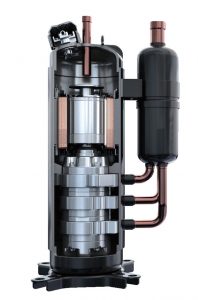 environmental footprint.
environmental footprint.
Alongside a lighter and more compact chassis, Toshiba has imparted SMMS-u with a number of features to help installers save time via quicker and easier installation, commissioning and maintenance routines. By way of example, piping for the oil balance circuit is no longer needed. Instead, a new oil management system ensures continuous compressor lubrication. In another enhancement, Toshiba’s Wave Tool Advance app allows installers to access system information and start test runs using an Android smartphone. For installers wanting to collect and save rich data sets, a new service tool for use with laptop devices can be accessed from either outdoor or indoor locations.
To ensure optimised year-round comfort, intelligent VRF control always delivers the right amount of refrigerant to the indoor units in line with demand. Furthermore, Toshiba has developed a sensor-based concept that only initiates the defrost function when absolutely necessary to ensure up to 5 hours of uninterrupted heating. In multi-module applications, defrost cycles are always staggered.
The large range of indoor units with capacities from 0.3 to 10HP can be adapted to all room configurations thanks to a comprehensive range of cassettes, ducts, and ceiling, high wall and console units. Of special note, Toshiba has made available a new 1-way cassette of simple and elegant design with ultra-slim chassis, motion sensor and advance filtration as an option. Also new is Toshiba’s slim duct solution, which offers ultra-compact chassis and quiet operation to benefit applications such as hotels.
Toshiba’s SMMS-u represents a full heating/cooling packaged solution that will bring advantages to all HVAC stakeholders. Offering class-leading quality and reliability, the first-generation product was launched in 1986, with the SMMS (Super Modular Multi System) name adopted in 2003. Today, the unrivalled seventh-generation pushes efficiency, adaptability and connectivity to even higher levels of performance and usability.
For more information visit www.toshiba-aircon.co.uk/product/smmsu-r410a-new/
-ends-
To have your industry news published in the pages of FMJ’s news section, Month in FM, and here online on fmj.co.uk, please send your news and image to Danny Grange danny.grange@kpmmedia.co.uk
The view or information contained within these unedited press releases, are that of the company producing it and not necessary the views of kpm.

